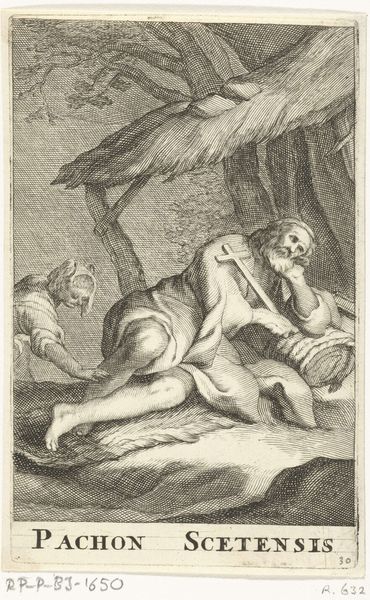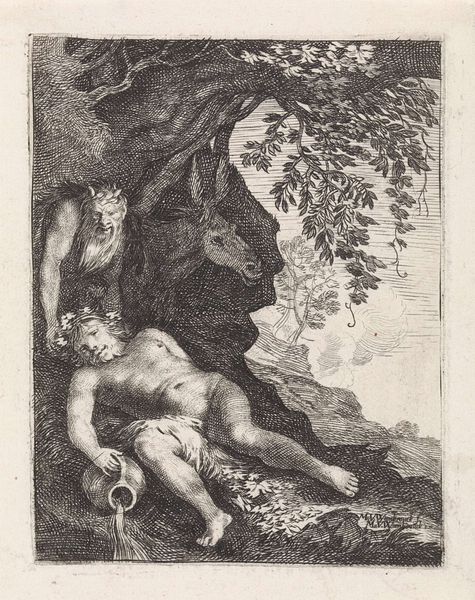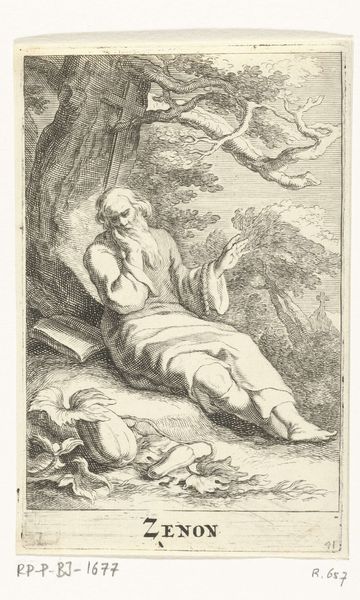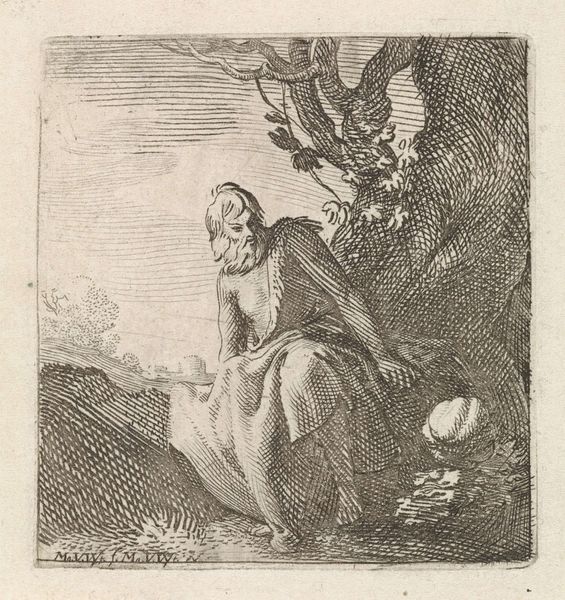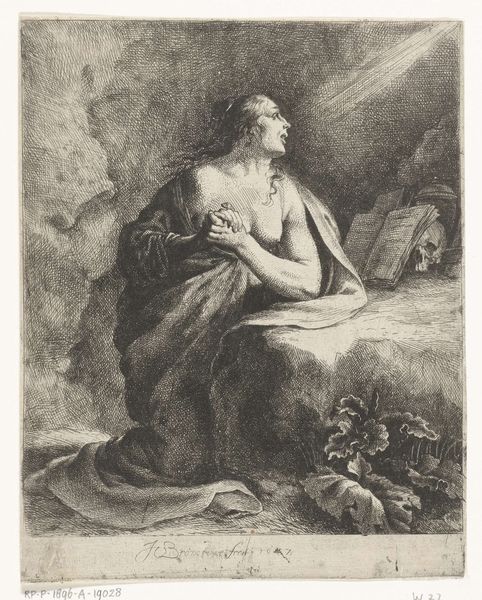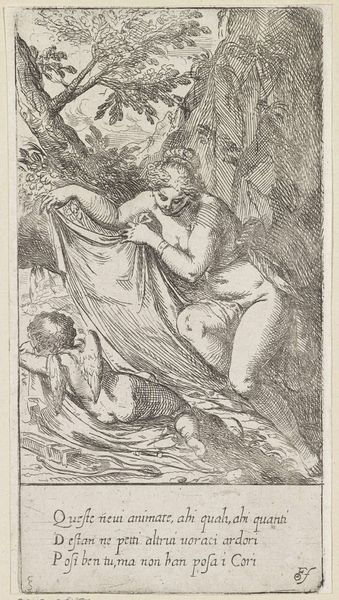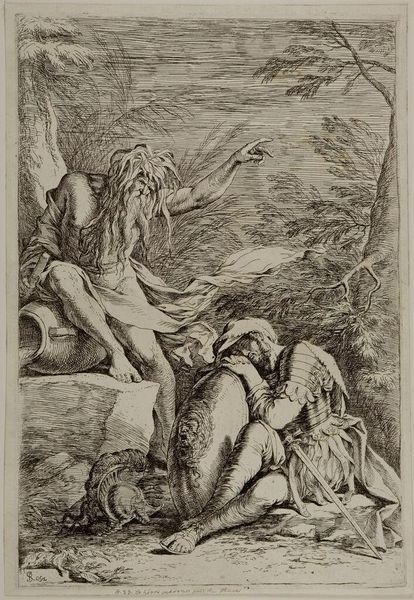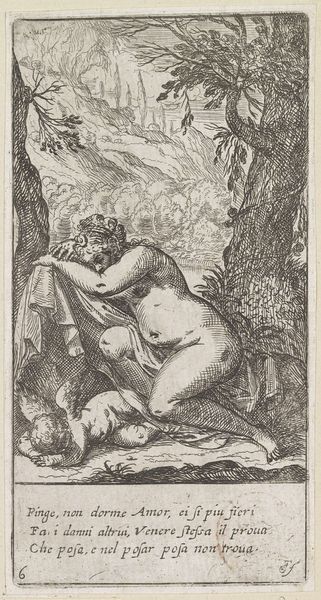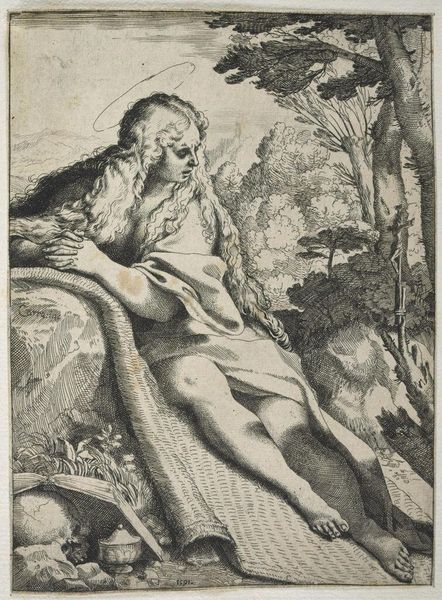
print, engraving
#
portrait
#
baroque
# print
#
pen illustration
#
old engraving style
#
caricature
#
mannerism
#
vanitas
#
pen-ink sketch
#
portrait drawing
#
history-painting
#
engraving
Dimensions: height 135 mm, width 85 mm
Copyright: Rijks Museum: Open Domain
Editor: So, this is "Heilige Melania de Jongere" by Frederick Bloemaert, created sometime after 1636. It's an engraving, which gives it this really stark, almost haunting feel. There's Melania, kneeling, with a skull and cross nearby… It feels very…somber. What do you see in this piece, from your perspective? Curator: Considering this engraving, I focus on the processes of its creation, the materials used, and its social context. Engraving, as a process, inherently involves labor – the labor of the artist physically cutting into the copperplate. The sharp, precise lines weren't spontaneously created; they are the result of meticulous, physical work. And the print itself—multiple copies could be made and circulated. Who would buy this, how much did it cost, and how does it work ideologically? Editor: That’s fascinating. I never considered the sheer labor involved in creating something like this. Curator: Absolutely! Look closely at the lines themselves. The varying thickness and density weren’t just for shading. They controlled the distribution of ink on the page, the tactile qualities for viewers, and they allowed a relative democratization of the image via reproducible prints. We should think of art less as coming purely from the artistic mind, and more from the interactions of skilled workers and available resources. Editor: So, it's less about individual genius and more about...production? Curator: Precisely! This challenges our preconceived notions about the artist, their role in society, and art consumption. This isn't about abstract 'beauty' alone. It is about the production, exchange, and social power inscribed on it. Editor: I see what you mean. It makes you think about who could afford art, and how these images spread ideas. Curator: And further, what ideas are furthered via these means. Engravings such as this became part of complex visual networks that actively constructed early modern society. Considering materiality moves us to critical insight! Editor: This really changes how I think about art, especially older works. Thanks! Curator: My pleasure! Recognizing the labor and materials embedded within artworks like "Heilige Melania" enables a richer appreciation for art's role as social, economic, and communicative practice.
Comments
No comments
Be the first to comment and join the conversation on the ultimate creative platform.


